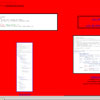 "ep
#1:
did
the
dot
com
bust
you?"
is
a
strange
sort
of
website,
a
website
created
as
a
"release,"
like
a
music
EP
or
a
software
version.
A
release
distributing
"software
from
un-medicated
people"
(this
is,
I
presume,
a
re-interpretation
of
"software
art").
All
the
software
is
implemented
in
Perl,
hence
it's
usually
quite
portable
and
executable
over
a
network
like
the
internet.
"ep
#1:
did
the
dot
com
bust
you?"
is
a
strange
sort
of
website,
a
website
created
as
a
"release,"
like
a
music
EP
or
a
software
version.
A
release
distributing
"software
from
un-medicated
people"
(this
is,
I
presume,
a
re-interpretation
of
"software
art").
All
the
software
is
implemented
in
Perl,
hence
it's
usually
quite
portable
and
executable
over
a
network
like
the
internet.Some of the pieces / compositions are quite simple and very clever. The endless-loop piece "Prozac" uses the phrase "hello world" commonly used by programmers to test scripts (especially when learning a new language) as an indication that the script is doing as it is intended: show the phrase on the screen -- a greeting from the computer back to the user, an induction to the new language. The piece inverts this situation by making the greeting directed at the computer itself, infinitely. This in essence greets the computer to a stage where it crashes.
The piece "Extreme Whitespace" is more visual than a conceptual piece like "Prozac". It basically keeps inputting "white space into your terminal for you to type into/with/against/around..." animating and coloring the text continuously, allowing you to turn typing into an event, a performance via a live text-based video mixer. The work has strong links with early ASCII art and those SPAM emails we all used to get that animated when you scrolled down fast. ÊSame concepts but with stunning results!!!
:: Garrett Lynch ::
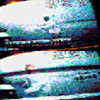 Though
the
name
Yoshi
Sodeoka
doesn't
pop
up
very
often
in
net-art
circles,
we
are
talking
about
an
Internet
pioneer
who
was
one
of
the
first
that
offered
interactive
sound-manipulation
in
his
works
for
the
Internet.
His
style
can
be
best
described
as
something
that
holds
the
middle
between
video
and
web
esthetics.
One
of
his
first
net
projects,
called
"Project
19,"
can
still
be
viewed
at
Hotwire's
RGB
gallery.
What
is
less
known
though
is
that
Yoshi
Sodeoka
was
once
an
art
director
of
the
now
legendary
Word.com
and
set
up
the
shift.jp.org's
Bin
section,
which
is
an
online
exhibition
space
that
concentrates
on
technically
advanced
net
pieces.
Though
Bin
is
still
running
(a
new
work
is
added
once
a
month),
Word.com,
and
works
of
a
dozen
artists
with
it,
are
unfortunately
lost
forever.
Recent
work
by
Yoshi
Sodeoka
can
be
found
at
http://www.c404.tv.
Though
the
name
Yoshi
Sodeoka
doesn't
pop
up
very
often
in
net-art
circles,
we
are
talking
about
an
Internet
pioneer
who
was
one
of
the
first
that
offered
interactive
sound-manipulation
in
his
works
for
the
Internet.
His
style
can
be
best
described
as
something
that
holds
the
middle
between
video
and
web
esthetics.
One
of
his
first
net
projects,
called
"Project
19,"
can
still
be
viewed
at
Hotwire's
RGB
gallery.
What
is
less
known
though
is
that
Yoshi
Sodeoka
was
once
an
art
director
of
the
now
legendary
Word.com
and
set
up
the
shift.jp.org's
Bin
section,
which
is
an
online
exhibition
space
that
concentrates
on
technically
advanced
net
pieces.
Though
Bin
is
still
running
(a
new
work
is
added
once
a
month),
Word.com,
and
works
of
a
dozen
artists
with
it,
are
unfortunately
lost
forever.
Recent
work
by
Yoshi
Sodeoka
can
be
found
at
http://www.c404.tv.:: Peter Luining ::
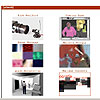 Last
Friday
and
Saturday,
the
results
of
the
Playing
field
project
were
presented
in
Dutch
Artspace
Montevideo.
The
project
focused
on
streaming
artworks
and
invited
artists
to
come
up
with
ideas
that
especially
explored
and
exploited
the
restrictions
of
streaming
technology
as
small
bandwidth,
small
video
size
and
waiting
time
caused
by
buffering.
It
resulted
in
9
different
projects
that
show
what
is
possible
nowadays
with
streaming
technique.
Among
the
9
projects
there
were:
Station
Rose's
"Webcasting,"
which
uses
streaming
as
a
performance
tool;
Peter
Merten's
project
"Lowflows,"
which
uses
ever-changing
internet
data
(like
temperature
or
cash
flows)
to
create
flows
of
abstract
images;
os_anm
by
Slateford
that
resurrects
the
old
style
pixel
streams
to
Kirk
Woolford's
"reckless
eyes,"
which
uses
real
people
with
camera's
attached
to
their
heads
to
create
a
system
allowing
people
to
see
through
other
peoples
eyes.
The
project
offers
a
very
interesting
overview
of
what
is
happening
in
this
branch
of
net
art.
Last
Friday
and
Saturday,
the
results
of
the
Playing
field
project
were
presented
in
Dutch
Artspace
Montevideo.
The
project
focused
on
streaming
artworks
and
invited
artists
to
come
up
with
ideas
that
especially
explored
and
exploited
the
restrictions
of
streaming
technology
as
small
bandwidth,
small
video
size
and
waiting
time
caused
by
buffering.
It
resulted
in
9
different
projects
that
show
what
is
possible
nowadays
with
streaming
technique.
Among
the
9
projects
there
were:
Station
Rose's
"Webcasting,"
which
uses
streaming
as
a
performance
tool;
Peter
Merten's
project
"Lowflows,"
which
uses
ever-changing
internet
data
(like
temperature
or
cash
flows)
to
create
flows
of
abstract
images;
os_anm
by
Slateford
that
resurrects
the
old
style
pixel
streams
to
Kirk
Woolford's
"reckless
eyes,"
which
uses
real
people
with
camera's
attached
to
their
heads
to
create
a
system
allowing
people
to
see
through
other
peoples
eyes.
The
project
offers
a
very
interesting
overview
of
what
is
happening
in
this
branch
of
net
art.:: Peter Luining ::
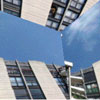 "b
u
i
l
.
d
i
n
g
s"
is
a
new
interactive
fiction
project
created
for
the
Internet
by
Michael
Sellam.
"b
u
i
l
.
d
i
n
g
s"
is
a
new
interactive
fiction
project
created
for
the
Internet
by
Michael
Sellam.
On the artist's request, 24 artists submitted photographs of buildings seen from the outside. These images were then used -- one for each hour in a day -- to wallpaper a room or cube (something along the lines of how Caves are manifested). This creates an outside in (the inverse of an inside out, obviously) virtual room / building in which the user is placed to turn and spin freely from a floating position. Sounds are then played to create the "narration from one place to another".
By combining photographs of architecture exteriors assembled by other artists and using a time-based algorithm to display the relevant photograph for the current hour, the artist manages to create a new virtual architecture which could only exist in a "space" like the internet: an architecture that's ever-changing, in-flux, progressing and / or deteriorating.
"buil.dings" is a continuation of 3D experiments by the artist occurring over the last two years, which also includes "seasons" and "visager".
:: Garrett Lynch ::
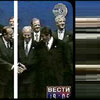 79
days
is
a
political
piece
showing
the
role
of
abstraction
as
an
aesthetic
device
which
can
easily
become
politicized
within
the
right
framework.
79
days
is
a
political
piece
showing
the
role
of
abstraction
as
an
aesthetic
device
which
can
easily
become
politicized
within
the
right
framework.
"79 days, a networked hypermedia project is shown here in its English version. Activated by the viewer the narrative thread links an extensive image database of media coverage of the 79 days of the Kosovo war, a live image search for reporting about the recent war in Iraq, everyday photographs and streamed video of Kosovars and Serbs.Ê Visitors to the site add terms used in current war reporting to a glossary of war(s) on the front page. created 2003, 3000 files, 40 minutes of streamed video, sound. Optimized for DSL."
When entering the site, one can select and mouseover various images; when this is done, a close-up of the particular area is shown on the right hand side of the window. This activity is reminiscent of computer defragmentation programs, which use the close-up feature to help the user understand the type of information being represented. 79 days uses the defragmentation idea to question media manipulation of political events.
Artist: Trebor Scholz
:: Eduardo Navas ::